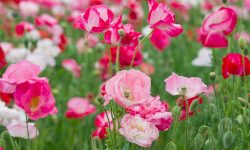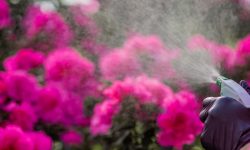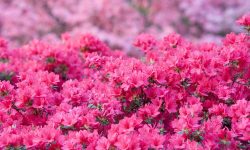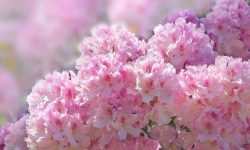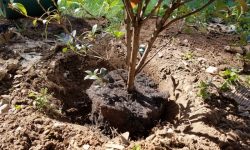There’s nothing quite as disheartening as watching your vibrant hibiscus lose its lush green leaves to an uninvited yellow hue. This beloved tropical beauty, known for its bold blooms and glossy foliage, can quickly become a gardener’s concern when signs of distress appear.
But don’t give up just yet. Yellow leaves are more than just a cosmetic issue—they’re a call for help. With the right knowledge and timely care, you can bring your hibiscus back to life and enjoy its full glory once again. Let’s uncover what your plant is trying to tell you—and how you can save it.
Understanding the Problem of Yellow Hibiscus Leaves
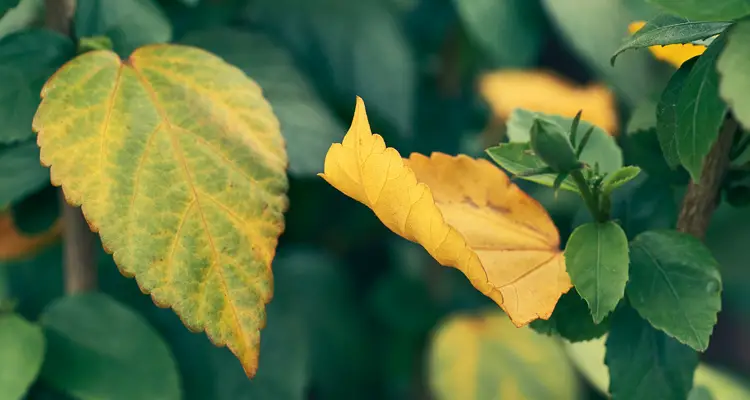
Yellowing leaves on a hibiscus plant are a clear sign that something is not quite right. Although it might seem like a simple cosmetic change, this discoloration is often a symptom of deeper stress affecting the plant’s overall health. Understanding the root causes of this issue is the first step toward effective recovery.
Hibiscus leaves turn yellow when their normal growth processes are disrupted. This can happen due to changes in water availability, soil quality, nutrient imbalance, light conditions, or even sudden weather shifts. For example, too much water can cause root rot, which limits the plant’s ability to take up nutrients—leading to chlorosis, or yellowing. On the other hand, too little water causes dehydration, another major stressor.
Moreover, yellowing may not be caused by environmental factors alone. Pests such as spider mites or aphids can suck the sap from leaves, damaging their structure and triggering discoloration. Diseases like fungal infections may also impair leaf function, leading to widespread yellowing if left untreated. Even transplant shock or aging leaves can naturally result in yellow tones, especially when the plant is redirecting energy to new growth.
By carefully observing patterns—such as whether the yellowing occurs on new or old leaves, whether it spreads quickly, or if other symptoms like curling, spots, or drooping appear—you can start to piece together the most likely cause. This understanding is essential, because the correct solution depends entirely on the specific issue affecting your plant.
Common Causes of Yellowing Hibiscus Leaves
Overwatering and Root Rot
One of the most frequent reasons hibiscus leaves turn yellow is overwatering. When the soil remains constantly wet, oxygen cannot reach the roots. As a result, the roots begin to rot and fail to absorb nutrients. Leaves respond by yellowing and dropping. Ensure your hibiscus grows in well-draining soil and that the pot or ground area allows excess water to escape.
Underwatering and Drought Stress
At the opposite end of the spectrum, underwatering can also lead to yellowing. Hibiscus plants need consistent moisture, especially in hot or dry weather. If the soil dries out too much between waterings, the leaves may begin to yellow and curl. In extreme cases, they will fall off entirely. Check the top two inches of soil regularly and water when they begin to feel dry.
Nutrient Deficiencies
Lack of nutrients is another key cause of leaf yellowing. Hibiscus plants are heavy feeders and require a steady supply of essential nutrients. Nitrogen deficiency often leads to pale yellow leaves, especially on older growth. A lack of magnesium can cause yellowing between leaf veins, while iron deficiency usually affects younger leaves. A balanced, slow-release fertilizer can help restore the proper nutrient balance.
Poor Soil Conditions
Soil quality has a big impact on hibiscus health. Compacted, clay-heavy soils often lead to drainage problems. Sandy soils may not hold nutrients long enough for roots to absorb them. A rich, loamy soil with organic matter works best. If your hibiscus is potted, consider repotting it with fresh soil if yellowing continues despite other corrections.
Inconsistent Watering Schedules
Irregular watering routines can confuse the plant’s natural rhythm. Alternating between soaking wet and bone dry conditions stresses the roots. Stress responses like yellowing or premature leaf drop may occur. Try to maintain a consistent watering schedule tailored to your climate and season. Use mulch to regulate soil moisture and prevent extreme fluctuations.
Temperature Extremes and Sudden Changes
Hibiscus plants love warmth, but they don’t tolerate cold well. Sudden cold snaps or exposure to temperatures below 50°F (10°C) can cause shock. Yellowing leaves are often the first sign. Similarly, extremely high temperatures may lead to rapid moisture loss, stressing the plant. If your region has frequent weather swings, consider moving your plant indoors or providing temporary protection.
Pests That Cause Yellow Hibiscus Leaves
Aphids and Whiteflies
Aphids and whiteflies are two common pests that attack hibiscus. These insects suck the sap from leaves and stems, causing yellowing, curling, and leaf drop. You may notice a sticky residue called honeydew on the foliage, which can lead to sooty mold. Whiteflies tend to swarm when the plant is disturbed, making them easy to spot. These pests weaken the plant and reduce its ability to photosynthesize effectively.
Spider Mites
Spider mites are tiny but highly destructive. They thrive in hot, dry environments and often go unnoticed until significant damage has occurred. Affected leaves may turn yellow, speckled, or bronzed and often drop prematurely. You may see fine webbing between the leaves and stems. Regularly misting your hibiscus and rinsing the leaves can help deter infestations, as mites prefer dry conditions.
Mealybugs and Scale Insects
Mealybugs and scale insects attach themselves to stems and leaf undersides. These pests are usually visible to the naked eye. Like aphids, they suck sap and cause yellowing leaves. Mealybugs appear as fuzzy white clusters, while scale insects resemble small bumps on the plant. Both can be difficult to remove completely, so repeated treatments with neem oil or insecticidal soap may be necessary.
Diseases That Lead to Yellow Leaves on Hibiscus
Fungal Leaf Spot
Fungal leaf spot is one of the most prevalent diseases that can cause hibiscus leaves to yellow. It begins as tiny brown, gray, or black specks that often have yellow margins or halos. These spots gradually enlarge and can merge, covering larger areas of the leaf surface. As the fungal infection spreads, affected leaves start to yellow completely and may drop prematurely, reducing the plant’s ability to photosynthesize and weakening its overall health.
This disease is especially aggressive in warm, moist environments where leaves stay wet for extended periods—often due to overhead watering or poor airflow. Fungal spores can travel via wind, rain splash, or contaminated tools. To control fungal leaf spot, it’s crucial to provide good air circulation by spacing plants appropriately and pruning dense foliage. Water the soil directly at the base of the plant rather than from above. Promptly remove and destroy any affected leaves, and consider using an organic or chemical fungicide if the issue persists.
Root Rot
Root rot is a serious and often deadly condition for hibiscus plants, caused primarily by poor drainage and overwatering. When roots sit in soggy soil for too long, they are deprived of oxygen and become susceptible to decay from pathogens like Phytophthora and Pythium. The earliest visible symptom is yellowing leaves, which often appear along with wilting, drooping, and stunted growth—even though the soil may feel moist.
Unlike some leaf diseases, root rot affects the plant below the soil line, so symptoms aboveground may not be immediately associated with the root system. To confirm, gently lift the hibiscus from its pot or ground and examine the roots. Healthy roots are firm and white or light tan. In contrast, rotting roots appear brown, soft, or slimy and may give off a foul smell. Treatment involves trimming away all infected roots with sterile scissors, allowing the root ball to dry briefly, and repotting the plant in fresh, well-draining soil. Consider adding perlite, coarse sand, or bark to improve aeration. Also, reduce watering until the plant shows signs of recovery.
Bacterial Blight
Bacterial blight is a fast-spreading and destructive disease that can devastate hibiscus foliage. It often begins with water-soaked, translucent spots or streaks on the leaves and stems. These lesions can quickly expand, leading to widespread yellowing, browning, and leaf drop. In more advanced stages, the leaves may wilt suddenly and remain limp despite sufficient watering. Infected areas may develop a slimy texture and give off an unpleasant odor in humid conditions.
The disease thrives in wet, warm environments, particularly when poor hygiene practices—such as using unsterilized tools—are followed. Rain splash, overhead irrigation, and handling infected plants can also accelerate the spread of bacteria. Prevention is more effective than cure. Always sterilize pruning tools before and after use, and dispose of infected plant material in sealed bags to prevent contamination. Avoid watering over the foliage, and improve air movement around the plant to keep leaves dry. If necessary, apply copper-based bactericides early in the infection, though their effectiveness may vary. In severe cases, removing the entire plant may be the only option to protect nearby healthy hibiscus.
Environmental Stressors That Contribute to Yellowing
Sunlight Issues
Hibiscus plants are sun-loving, but their light requirements must be carefully balanced to avoid yellowing leaves caused by stress. In optimal conditions, hibiscus thrives with 6 to 8 hours of full sun daily. However, prolonged exposure to harsh afternoon sunlight, especially in hot climates or during heatwaves, can cause sunscald—characterized by leaf burn, yellow patches, and even leaf drop. On the other hand, insufficient light—such as when grown indoors too far from a window or in a heavily shaded garden bed—slows photosynthesis, resulting in pale, leggy growth and chlorotic (yellowing) leaves.
To maintain healthy foliage, position your hibiscus where it gets gentle morning sun and some afternoon shade, especially in hotter zones. For indoor plants, place them near a south- or west-facing window and rotate them regularly to ensure even light exposure. If natural light is limited, consider using a grow light to supplement.
Wind Exposure
Excessive wind can significantly impact the health of hibiscus, especially when combined with intense sun or dry weather. Gusty conditions dry out soil faster than expected and accelerate moisture loss from leaves, leading to dehydration and stress-induced yellowing. Additionally, wind can bruise or tear delicate hibiscus leaves and stems, making them more vulnerable to fungal or bacterial infections.
Young plants, or those recently moved outdoors, are particularly susceptible. Providing wind protection—such as placing plants near a fence, wall, or taller vegetation—can reduce the risk. In very windy regions, consider planting hibiscus in containers that can be moved to a sheltered location or using temporary barriers like burlap screens or garden fabric.
Transplant Shock
Transplant shock is a common, short-term cause of yellowing leaves in hibiscus. It happens when the root system is disturbed—either during repotting, relocation, or division—causing temporary disruption in the plant’s ability to absorb water and nutrients. As a result, older leaves may yellow and drop as the plant redirects energy to establish new roots.
The extent of shock depends on how much of the root ball was disturbed and how different the new environment is from the previous one. To ease the transition, transplant during cooler parts of the day, keep the soil consistently moist (but not soggy), and protect the plant from full sun for the first few days. Avoid fertilizing until the plant shows signs of new growth, which indicates recovery. In most cases, hibiscus will bounce back within a few weeks once it adjusts to its new home.
Seasonal Changes and Natural Yellowing
Hibiscus plants, especially tropical and hardy varieties, naturally respond to seasonal shifts with some degree of leaf yellowing. As temperatures cool in autumn or early winter, it’s common for older leaves to yellow and fall off as the plant prepares for dormancy or reduced growth. This process helps the plant conserve energy and redirect resources to vital tissues like roots and buds.
Similarly, in spring, when hibiscus emerges from dormancy, it may shed a few yellowing leaves while producing fresh growth. These seasonal changes are normal and not a sign of poor health, especially if new leaves are forming.
To support the plant through these transitions, reduce watering during cooler months, avoid fertilizing when the plant is not actively growing, and move container plants indoors or to a sheltered area before frost. Understanding that some leaf yellowing is part of the natural cycle can help gardeners avoid unnecessary worry or overcorrection.
How to Fix Yellowing Leaves on Your Hibiscus
Adjust Your Watering Schedule
Start by checking the soil moisture with your finger or a moisture meter. If the soil is dry more than an inch below the surface, it’s time to water. However, soggy soil means you need to cut back. Ensure that your hibiscus receives consistent moisture without being waterlogged. In hot weather, water deeply once a day for potted hibiscus and every few days for those planted in the ground. During cooler seasons, reduce watering to avoid root rot.
Improve Drainage Conditions
If your hibiscus sits in heavy or clay-based soil, its roots may suffocate and decay. Improve drainage by amending the soil with organic compost, perlite, or sand. For container plants, ensure there are enough drainage holes at the bottom. If water pools at the base or takes a long time to drain, repot the plant using a well-draining potting mix designed for tropical flowering plants.
Modify Fertilizer Use
Reevaluate the type and frequency of fertilizer you use. A balanced fertilizer with an NPK ratio close to 10-10-10 or 12-6-8 is usually suitable for hibiscus. If yellowing is due to overfeeding, stop fertilizing for a few weeks and flush the soil with water. If underfeeding is the problem, begin applying a diluted liquid fertilizer every two weeks. Yellow leaves with green veins often indicate iron deficiency, so consider using a foliar spray that includes iron chelates.
Relocate the Plant if Needed
If your hibiscus gets too much harsh afternoon sun or not enough light at all, it may start to yellow. Choose a new spot that offers morning sun and light shade in the afternoon, especially in hot climates. For indoor hibiscus, place the plant near a south-facing window or use grow lights to simulate sunlight for at least 6 hours a day.
Treat Pests and Diseases Promptly
If pests like aphids, spider mites, or scale are causing the yellowing, spray your hibiscus with neem oil, insecticidal soap, or horticultural oil every few days until the pests are gone. For fungal issues like leaf spot, remove affected leaves and avoid overhead watering. If the infection persists, apply a suitable fungicide. For bacterial infections, prune infected parts and disinfect your tools with rubbing alcohol.
Prune Damaged Growth
Removing yellow, damaged, or diseased leaves helps hibiscus recover faster and prevents the spread of problems like pests or fungi. Use clean, sharp shears to cut just above a healthy leaf node. Focus on pruning mushy stems, spotted leaves, or any visibly unhealthy growth.
The best time for heavier pruning is in spring or early summer when the plant is actively growing. For minor issues, prune as needed year-round. After pruning, support recovery with proper watering, sunlight, and feeding to encourage strong new growth.
Long-Term Hibiscus Care for Preventing Yellow Leaves
Maintain a Consistent Routine
Hibiscus plants flourish when their environment remains stable. Fluctuations in watering schedules, sudden exposure to intense sunlight, or drastic temperature shifts can all trigger yellowing. Try to water at the same time of day, keep the pot or garden location consistent, and avoid changing fertilizers or moving the plant unless absolutely necessary. For indoor hibiscus, avoid placing it near vents, heaters, or drafty windows that cause sudden changes in humidity and temperature.
Use Mulch Around Garden Hibiscus
For hibiscus grown outdoors, mulching is one of the easiest ways to improve long-term health. Organic mulch helps maintain consistent moisture levels in the root zone and acts as a buffer against temperature extremes, especially during hot summers and cooler nights. Choose natural materials like pine bark, leaf mold, or compost, and apply the mulch in a wide ring around the plant’s base. Be careful not to pile mulch against the stem, as this can trap moisture and invite rot or fungal infections.
Regularly Inspect for Problems
Weekly inspections can make a huge difference in preventing yellowing caused by early pest infestations or diseases. Examine your hibiscus carefully, looking for sticky residue, curling leaves, unusual spots, or tiny insects. Spider mites, aphids, and whiteflies often hide on the underside of leaves, so check there first. Also, inspect the soil surface for mold, fungus gnats, or signs of overwatering. Catching issues early allows for quicker, simpler solutions.
Feed Strategically Throughout the Year
Proper fertilization supports lush green foliage and vibrant flowers, but timing and type matter. During the active growing season—usually spring to early autumn—apply a balanced, hibiscus-specific fertilizer every few weeks or use a slow-release formula. Look for a fertilizer with a slightly higher potassium content to promote flowering while supporting leaf health. Stop feeding in late fall unless the plant is actively growing indoors. Feeding when growth is minimal can lead to nutrient buildup, salt stress, and eventually yellowing.
Repot When Necessary
Potted hibiscus need periodic repotting to stay healthy. Over time, the soil becomes compacted and depleted of nutrients, and roots may grow tightly around the container’s edge, restricting access to water and air. Signs that your plant needs repotting include water running straight through the pot, visible roots above the soil line, or slowed growth despite regular care. Repotting into fresh, well-draining soil not only revitalizes the plant but also gives you a chance to inspect and trim unhealthy roots. Choose a slightly larger pot and water thoroughly after repotting to help the plant adjust smoothly.
Frequently Asked Questions About Yellowing Hibiscus Leaves
Why are my hibiscus leaves turning yellow and dropping?
This usually happens due to inconsistent watering, sudden temperature changes, or stress after moving the plant. Check if the roots are too wet or dry. Gradual leaf loss is natural, but sudden mass yellowing needs prompt attention to prevent long-term damage.
Can I save a hibiscus with yellow leaves?
Yes, most hibiscus plants can fully recover if you identify the cause early and adjust care practices. Prune damaged leaves, improve drainage, and treat pests or nutrient imbalances. Healthy new leaves will emerge once the plant stabilizes.
How do I know if my hibiscus is overwatered?
Signs of overwatering include yellow leaves, wilting despite wet soil, and mushy roots. To confirm, remove the plant from the pot and inspect the root ball. If the roots are dark and smell sour, they are likely rotting and need to be trimmed.
Should I remove yellow leaves from my hibiscus?
Yes, removing yellowing leaves helps the plant focus energy on new growth and reduces the risk of fungal spread. Use clean shears and cut at the base of the leaf stem. If the yellowing is widespread, address the root cause before pruning too much.
Can indoor hibiscus leaves turn yellow due to low humidity?
Yes, hibiscus plants prefer high humidity. Indoor air, especially in air-conditioned or heated rooms, can dry out the leaves and cause them to yellow and curl. Increase humidity by misting the plant, using a pebble tray, or placing a humidifier nearby.
Conclusion
Yellowing hibiscus leaves can be alarming, but they’re often the plant’s way of asking for help. Whether it’s a sign of overwatering, nutrient imbalance, pests, or simple stress, most causes are reversible with prompt attention. By observing your plant closely and making small, thoughtful adjustments, you can restore its vibrant health. With consistent care, your hibiscus will bounce back—lush, green, and full of beautiful blooms once again. Don’t be discouraged by a few yellow leaves; they’re just part of the growing journey.

